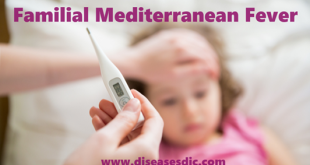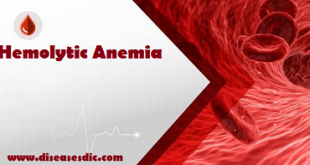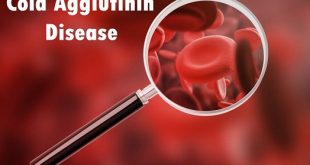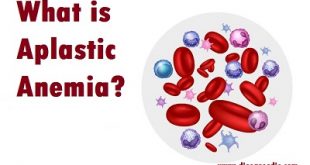Overview of Factor V Leiden
Factor V Leiden is a genetic mutation that affects blood clotting within the human body. This mutation leads to an increased risk of developing abnormal blood clots, a condition known as thrombophilia. Normally, when an injury occurs, a complex series of events takes place to form a blood clot, which helps to prevent excessive bleeding. One of the key players in this process is a protein called factor V, which is essential for clot formation. However, in individuals with Factor V Leiden, a specific genetic mutation causes factor V to be resistant to the body’s natural regulation mechanisms, leading to an increased tendency for clot formation. This heightened clotting risk can result in various health complications, such as deep vein thrombosis (clots in the legs) or pulmonary embolism (clots in the lungs), as well as an increased risk during pregnancy.
It is inherited in an autosomal dominant manner, meaning that having just one copy of the mutated gene from one parent is sufficient to increase clotting risk. People with two copies of the mutation (homozygous) have an even higher risk of abnormal clotting compared to those with one copy (heterozygous). Genetic testing can confirm the presence of the mutation and help individuals understand their clotting risk, allowing for proactive management and preventive measures to reduce the likelihood of clot-related complications.
Types of Factor V Leiden
There is typically only one type of Factor V Leiden mutation, which involves a specific point mutation in the F5 gene. This mutation results in a factor V variant that is resistant to inactivation by protein C, a natural anticoagulant protein in the blood. This resistance to protein C’s anticoagulant effect leads to an increased risk of clot formation.
While there may be slight variations in the specific genetic sequence due to individual differences, the fundamental mutation causing Factor V Leiden is the same across affected individuals. Therefore, it is generally not classified into multiple types in the same way that some other genetic conditions might be. Instead, it is recognized by the specific mutation at a single genetic locus.
Epidemiology
The most prevalent inherited thrombophilia among unselected Caucasian individuals is the factor V Leiden mutation in a heterozygous state, occurring at a frequency of around 1% to 5%. In those with venous thromboembolism, this mutation is also recognized as the most frequent inherited thrombophilia, with an approximate occurrence of 10% to 20%. Carrying this genetic mutation escalates the lifelong risk of thrombosis by approximately 7 times in heterozygous cases, while homozygosis is uncommon and raises the risk by about 20 times. While the presence of this mutation heightens the susceptibility to a venous thrombotic event (VTE), there exists no clinical proof indicating an increased overall mortality risk among individuals heterozygous for the factor V Leiden mutation.
Pathophysiology
A singular nucleotide alteration in the factor V gene (changing guanine to adenine at position 1691) gives rise to Factor V Leiden. This modification results in the substitution of arginine with glutamine at amino acid position 506. This change eliminates the cleavage site for activated protein C at Arg506 in both factor V and factor Va. The outcome of this alteration is an augmentation of the procoagulant function of factor Va, coupled with a diminution in the anticoagulant function of factor V.
Symptoms of Factor V Leiden
Factor V Leiden disorder itself does not show any characteristic symptom, but since some of the abnormal blood clots happen in the deep vein or gets dislodged and settles within the lungs, it leads to some common symptoms. These include:
In case of DVT (Deep Vein Thrombosis):
- Swelling
- Pain and tenderness
- Heaviness of the affected part
- Warmth of the skin
- Vivid red discoloration
- Purple or “bluish” discoloration of the skin
- Veins that look large than usual
In case of PE (Pulmonary Embolism):
- Sudden shortness of breath
- Coughing up blood or blood-streaked sputum
- Sharp chest pain
- Rapid heartbeat and palpitations (i.e., tachycardia)
- Fainting or dizziness
- Very low blood pressure
What causes Factor V Leiden?
Factor V Leiden is a genetic disorder that affects blood clotting. It is primarily caused by a specific mutation in the F5 gene, which encodes for the Factor V protein. The mutation leads to an increased risk of abnormal blood clot formation. The primary cause of Factor V Leiden is:
Genetic Mutation
The most common cause of Factor V Leiden is a specific point mutation in the F5 gene. This mutation results in a variant of Factor V known as Factor V Leiden, which is less susceptible to degradation by activated protein C, a natural anticoagulant protein. This leads to an increased tendency to form blood clots.
Other factors that can contribute to the development of blood clots, although not the direct cause of Factor V Leiden, include:
Autosomal dominant inheritance: If a partner has factor V Leiden thrombophilia (affected), they have an equal 50% chance of transmitting their regular copy (blue square) or their mutated copy (white square) whenever they have a child. Consequently, each of their offspring faces a 50% likelihood of inheriting factor V Leiden thrombophilia.
Family History: Individuals with a family history of Factor V Leiden or a history of blood clotting disorders are at a higher risk of developing the condition.
Age and Gender: While the genetic mutation is present from birth, the risk of developing abnormal blood clots associated with Factor V Leiden tends to increase with age. Additionally, women have a slightly higher risk due to hormonal changes associated with pregnancy, oral contraceptive use, and hormone replacement therapy.
Pregnancy: Pregnancy increases the risk of blood clot formation due to hormonal changes and alterations in blood flow. Factor V Leiden mutation can exacerbate this risk.
Obesity: Obesity is associated with a higher risk of blood clot formation and can interact with genetic factors like Factor V Leiden to increase the overall risk.
Smoking: Smoking can damage blood vessels and increase the risk of clot formation, particularly in combination with genetic factors.
Surgery and Immobilization: Surgery and extended periods of immobilization can lead to sluggish blood flow, increasing the risk of clot formation. Factor V Leiden mutation can further heighten this risk.
Certain Medical Conditions: Conditions such as cancer, inflammatory disorders, and certain autoimmune diseases can increase the risk of blood clotting and interact with genetic factors to contribute to the development of abnormal clots.
It’s important to note that while the genetic mutation is the primary cause of Factor V Leiden, the risk of developing dangerous blood clots is influenced by a combination of genetic and environmental factors. Individuals with Factor V Leiden should work closely with their healthcare providers to manage their risk and take appropriate preventive measures.
Factors that increase the risk of developing a DVT or PE.
Risk factors
Blood clots may occur at any age but usually occur in adults. Blood clots are much less common in children, though they may occur.
What are the other risk factors for blood clots?
People who have one factor V Leiden gene have a 7 times increased risk of clots. People who have factor V Leiden genes have a 30 times increased risk of clots.
There are also other risk factors that may increase the likelihood of making blood clots. Children with factor V Leiden who do develop clots almost always have at least one of these additional risk factors. The two most common are:
- Not moving for long periods of time such as when you are in a cast, have had surgery or are on a long plane or car ride.
- It is important for you to try to move your legs frequently and avoid sitting for longer than 1-1/2 to two hours at a time.
- Birth control pills (those with estrogen) or hormone replacement therapy: Talk to your primary care providers or specialist about possible risks and benefits before taking the medication.
- Other serious medication conditions: These might include diabetes, cancer, lupus, liver disease, kidney disease, etc.
Complications of Factor V Leiden
Factor V Leiden is associated with an increased risk of developing abnormal blood clots, a condition known as thrombophilia. These clots can cause a range of complications, some of which can be serious and life-threatening.
Here are some of the potential complications of Factor V Leiden:
- Deep Vein Thrombosis (DVT): DVT occurs when a blood clot forms in a deep vein, typically in the legs or pelvis. This can lead to pain, swelling, and warmth in the affected limb. If a clot breaks free and travels to the lungs, it can cause a pulmonary embolism, which is a potentially life-threatening condition.
- Pulmonary Embolism (PE): A pulmonary embolism occurs when a blood clot travels to the lungs and blocks blood flow. This can result in chest pain, difficulty breathing, rapid heart rate, and even shock in severe cases.
- Venous Thromboembolism (VTE): VTE is a term that encompasses both DVT and PE. Individuals with Factor V Leiden are at an increased risk of developing VTE, which can lead to serious health complications and require prompt medical intervention.
- Recurrent Clots: Once an individual has experienced a blood clot due to Factor V Leiden, they are at a higher risk of developing additional clots in the future, especially during situations that further increase clotting risk, such as surgery, prolonged immobility, or pregnancy.
- Pregnancy Complications: Pregnant individuals with Factor V Leiden have an elevated risk of developing blood clots, particularly in the veins of the legs (DVT) or placenta. This can lead to pregnancy complications like miscarriage, stillbirth, or pre-eclampsia.
- Post-Thrombotic Syndrome: Some individuals who have experienced DVT may develop post-thrombotic syndrome, a condition characterized by chronic pain, swelling, and skin changes in the affected limb.
- Stroke: While Factor V Leiden is primarily associated with venous blood clots, there is some evidence suggesting an increased risk of arterial clotting events, such as ischemic stroke, particularly in certain circumstances or in individuals with additional risk factors.
Diagnosis
Diagnosing Factor V Leiden typically involves a combination of clinical evaluation, medical history assessment, and laboratory testing. Here’s how the diagnosis process generally works:
Clinical Evaluation and Medical History: A healthcare provider will begin by taking a detailed medical history, including any personal or family history of blood clotting disorders, previous clotting events, or conditions that might increase the risk of clotting. They will also inquire about any known genetic mutations in the family.
Laboratory Testing: The definitive diagnosis of Factor V Leiden involves laboratory tests that detect the presence of the genetic mutation causing the resistance to factor V regulation. Two common tests used for this purpose are:
- Activated Protein C Resistance (APC-R) Test: This test measures how well the patient’s blood responds to a protein called activated protein C. Individuals with Factor V Leiden tend to show reduced response to activated protein C, indicating the presence of the mutation.
- DNA Analysis: Genetic testing can directly identify the specific mutation in the F5 gene (the gene responsible for factor V production) that causes Factor V Leiden. DNA analysis can confirm whether an individual carries one or two copies of the mutated gene.
It’s important to note that testing for Factor V Leiden is usually done when there is a suspected or known history of clotting disorders, recurrent blood clots, or unexplained clotting events. Additionally, testing might be recommended for individuals with a family history of the mutation. The decision to test should be made in consultation with a healthcare professional, and genetic counselling may also be recommended to discuss the implications of the diagnosis and any necessary preventive measures.
How to treat Factor V Leiden?
Treatment for Factor V Leiden focuses on preventing these clotting events and managing the associated risks. The specific treatment approach may vary based on individual factors such as the presence of other medical conditions, the history of clotting events, and overall health. Here are some common strategies for treating Factor V Leiden:
Anticoagulant Medications
Blood Thinners (Anticoagulants): Medications like warfarin, heparin, and newer direct oral anticoagulants (DOACs) can be prescribed to prevent blood clot formation. These medications inhibit the clotting factors that contribute to abnormal clotting.
Thrombolytic Therapy
In cases of severe clot formation, such as in deep vein thrombosis or pulmonary embolism, thrombolytic medications might be used to dissolve the clots more rapidly.
Avoiding Triggers
Individuals with Factor V Leiden should avoid situations that can increase the risk of clot formation, such as prolonged immobility (long flights or bed rest), dehydration, and certain medications.
Hormone Use and Pregnancy
Women with Factor V Leiden should discuss the use of hormone-based contraceptives or hormone replacement therapy with their healthcare provider, as these treatments can increase clotting risk. Pregnant women with Factor V Leiden may require special monitoring and preventive measures to minimize the risk of clotting during pregnancy and postpartum.
Regular Monitoring
Individuals with Factor V Leiden may require regular blood tests to monitor their clotting factors and adjust medication dosages if necessary.
Genetic Counseling
Genetic counseling can help individuals understand their condition, assess their risk, and make informed decisions about family planning and lifestyle modifications.
Surgery and Medical Procedures
Before undergoing surgery or medical procedures, individuals with Factor V Leiden should inform their healthcare providers to ensure appropriate preventive measures are taken to minimize clotting risk.
It’s important for individuals with Factor V Leiden to work closely with their healthcare provider to develop a personalized treatment plan that addresses their specific needs and risk factors. Treatment may involve a combination of medication, lifestyle changes, and ongoing monitoring to reduce the risk of clot formation and its associated complications.
Lifestyle Changes to treat Factor V Leiden
- Physical Activity: Regular exercise can improve blood circulation and reduce the risk of clot formation. However, it’s important to discuss the appropriate level of activity with a healthcare provider to avoid excessive strain.
- Weight Management: Maintaining a healthy weight can reduce strain on the cardiovascular system and lower the risk of clot formation.
- Smoking Cessation: Quitting smoking is important, as smoking can damage blood vessels and contribute to clot formation.
Prevention of Factor V Leiden
If your factor V Leiden requires you to take anticoagulant medication, here are some steps that might help you prevent injury and avoid excessive bleeding:
- Avoid playing contact sports or engaging in other activities that could result in physical injury. Regular noncontact exercise, such as walking or swimming, is still recommended for good health.
- Use a soft toothbrush and waxed floss.
- Avoid shaving cuts by using an electric razor.
- Be cautious with household tasks involving knives, scissors and other sharp tools.
 Diseases Treatments Dictionary This is complete solution to read all diseases treatments Which covers Prevention, Causes, Symptoms, Medical Terms, Drugs, Prescription, Natural Remedies with cures and Treatments. Most of the common diseases were listed in names, split with categories.
Diseases Treatments Dictionary This is complete solution to read all diseases treatments Which covers Prevention, Causes, Symptoms, Medical Terms, Drugs, Prescription, Natural Remedies with cures and Treatments. Most of the common diseases were listed in names, split with categories.







